Over the past weeks, we have been exploring different Photoshop Layer Style Effects.
(How to Load Layer Styles; Photoshop Styles 101: The Stroke; Photoshop Styles 101: Color Overlay); Photoshop Styles 101: Color Overlay, Part 2)
Since our Annual Next Designer Challenge is in full swing, and this weeks assignment was to create a set of 5 solid and 5 patterned papers, let’s take a look at the Pattern Effect in Layer Styles.
Background Basic #1:
Some Layer Styles may consist of multiple effects, while some may only have one.
My Painted Autumn Styles incorporate 6 Effects (Stroke, Inner Shadow, Satin, Color Overlay, Pattern Overlay; and I have added a Drop Shadow for the purpose of this tutorial.)

My Color Outside the Lines Styles incorporate only one Effect, that of a pattern.

Background Basic #2:
Some Styles are “seamless,” while others are not. When a style is seamless, you can move the pattern around without seeing a seam. When the style is not seamless, you may see a seam, depending upon the size of the element to which you are applying the style.
In the image below you can see the seam in this Pattern Effect. This is not a seamless style.
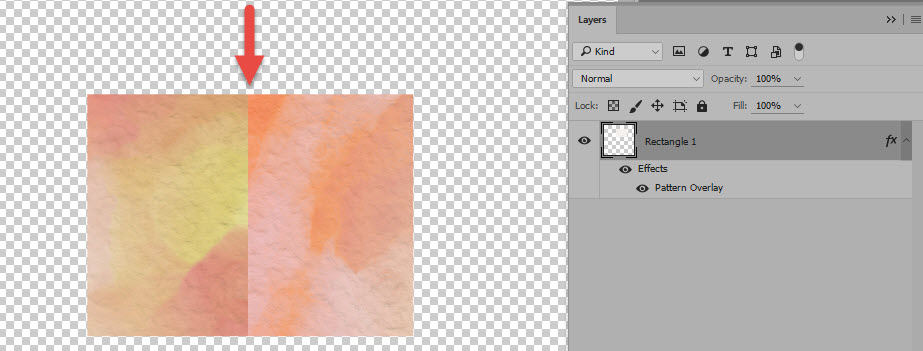
You can see the seam in this Style.
Here is the same Style, adjusted, so that we do not see the seam.
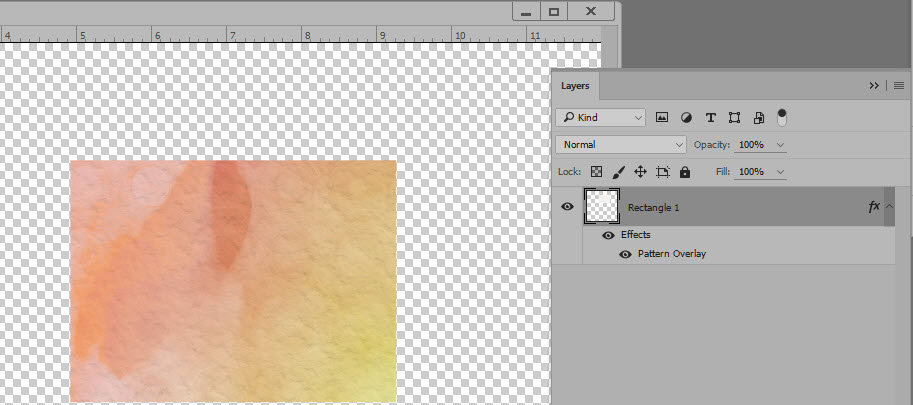
You cannot see the seam in this Style.
While there is a way to make a non-seamless pattern into a seamless pattern; it is an advanced technique, which we will not cover today.
Adjusting the Pattern Overlay Effect:
To access the Pattern Overlay options, double-click on the Pattern Overlay in the Styles box, on the left.
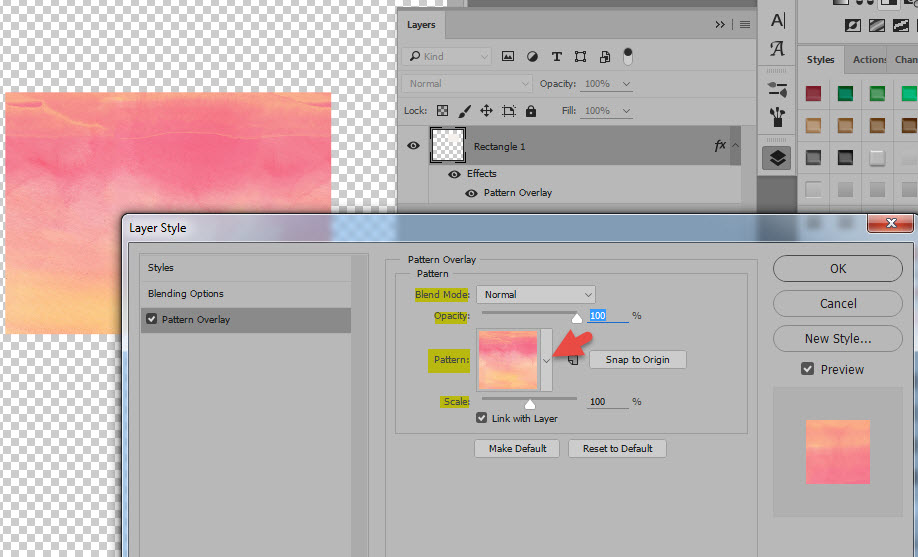
(I am using a Color Outside the Lines Style in this example.)
Available Options:
- Blend Mode: Access blend mode options by clicking on the down-pointing arrow. Blend Modes here work exactly the same as they do in the Layers Panel. (Blend Modes: What are they?)
- Opacity: Adjust the slider to change the opacity of the pattern, if desired.
- Pattern: Click on the down-pointing arrow to access other patterns. (We’ll look at this in just a minute. For now we don’t want to change the pattern.)
- Scale: Use the slider to adjust the size of your pattern, if desired. (Typically it is not advisable to take the pattern above 100%; however, in some cases, doing so might be okay. Just pay attention to the clarity of the pattern, when you go above 100%.)
- Leave Link with Layer checked.
Please note that for Styles you acquire, they are created by the Designer to use as-is; and these adjustments are not necessary. These are just adjustments you can make should you wish to alter the style for any reason.
Examples:
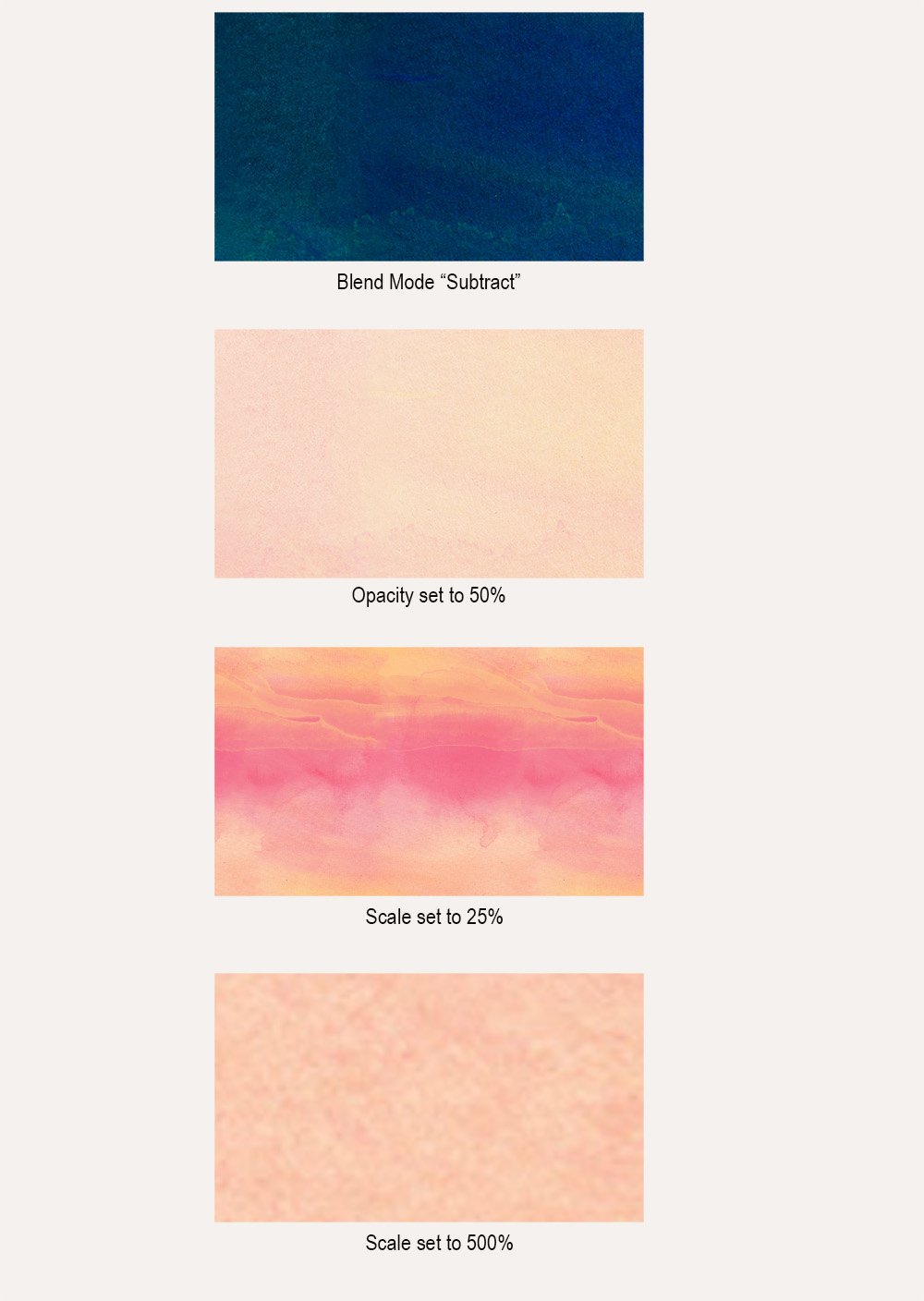
Pattern Position:
You can move the pattern position to adjust the look of a multi-colored or patterned paper, or when working with a non-seamless pattern in order to remove the visibility of the seam on your object.
With the Layer Style Panel Open, left-click with your mouse on the pattern in the object you are working with. While continuing to hold down your mouse button, drag the pattern around until you get the desired look.
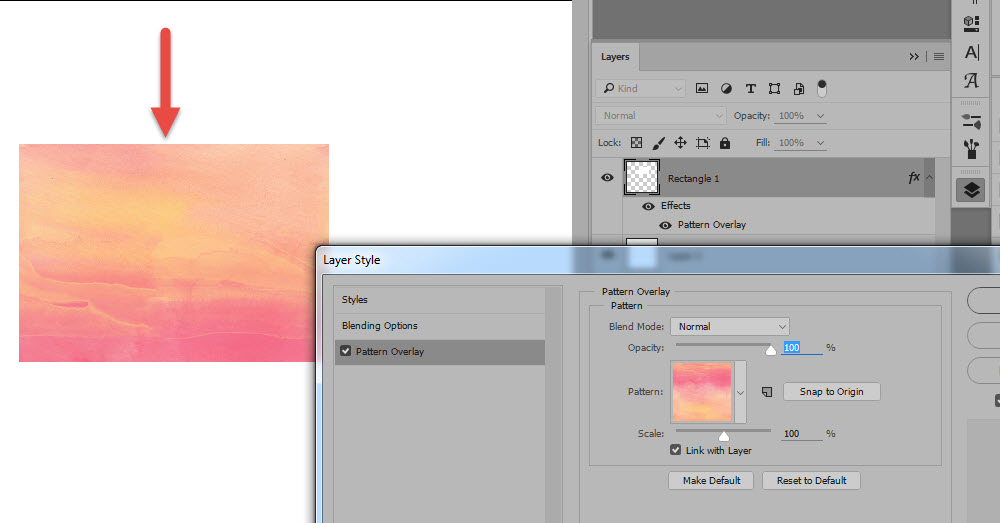
Here are 3 different looks I received from dragging this one pattern around in the rectangle I was using in this example.
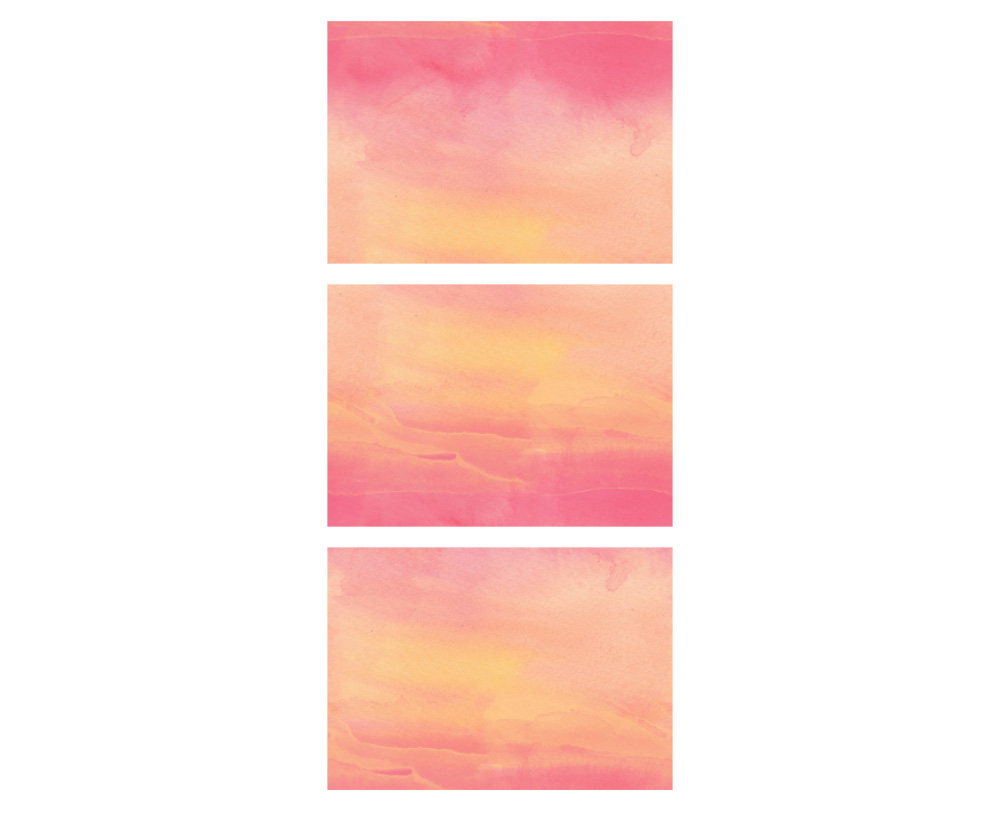
Changing Patterns:
If you like the Effects of one Style, but wish the Pattern was different, it’s easy to change.
This is one of my Chipboard Styles. Let’s leave the Bevel & Emboss, Inner Glow, and Drop Shadow alone; and change only the Pattern Overlay.

Open the Style options box, then the Pattern options. Click on the down-pointing arrow next to “Pattern” to access all of the patterns you have loaded. Click on the Pattern you would like to use, then click OK.
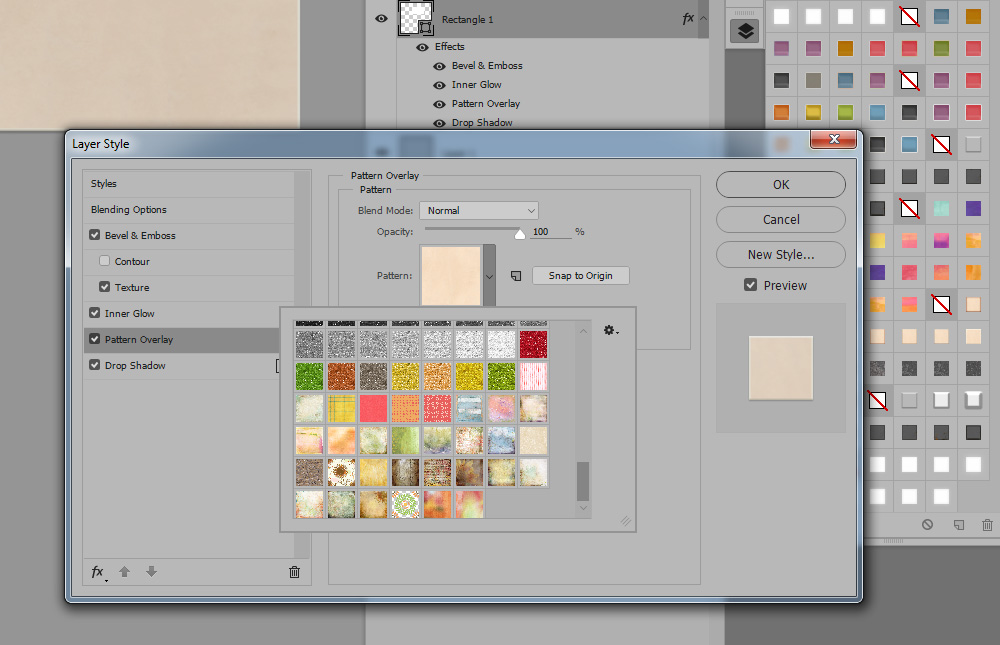
Once you replace your pattern, adjust other options as needed. (I changed the Blend Mode of this pattern to Overlay.)

Adobe has included a lot of different Patterns for us to play with. Click on Pattern Overlay options, then click on the small gear to the right, to access patterns that are included in Photoshop.
 That’s it for today! I hope you have fun experimenting with Patterns in Layer Styles!
That’s it for today! I hope you have fun experimenting with Patterns in Layer Styles!
For today’s tutorial, I am using Photoshop CC2015.5. This extensive Pattern option is not available in Photoshop Elements; however, there are some things you can do with Patterns in PSE. Please see Comments by Peggy S below for more information! Thanks, Peggy!
If you would like to download this tutorial in PDF format, you may do so here: Photoshop Styles 101: Pattern Overlays





Fun to see all the options available in full Photoshop. For us PSE users, I thought I would let newer users know that we can use pattern styles and make some changes to them, such as scale them, and use blending modes or opacity after they are applied. But we can’t do everything shown here, especially actually create a style, as far as I know.
Thank you, Peggy! I did forget that! I have amended my tutorial and directed PSE users to your comments! Thank you!